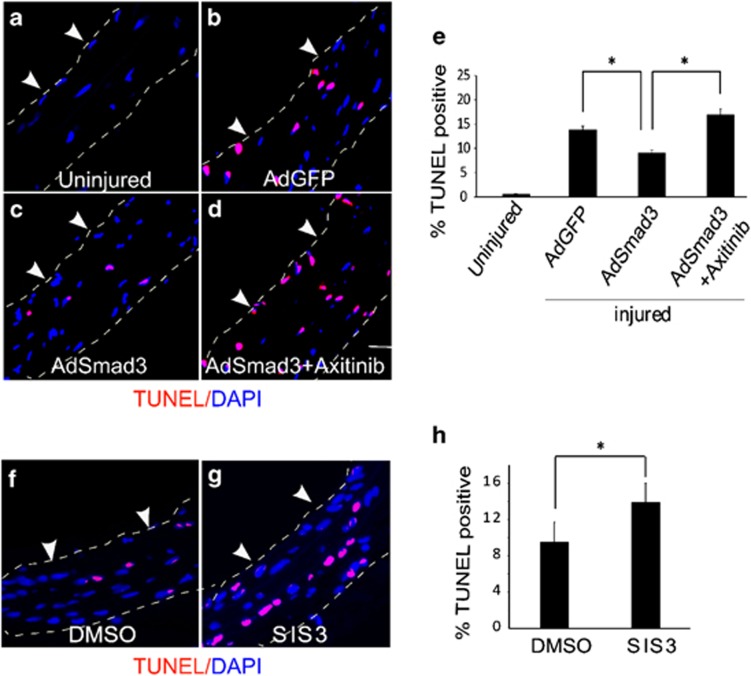Figure 6.
Inhibition of VEGF receptor or Smad3 reverses the antiapoptotic effect of Smad3 in balloon-injured rat carotid arteries. Sham surgery (a) or balloon angioplasty (b–d) was performed in rat common carotid arteries followed by infusion (200 μl virus, 2.5 × 109 PFUs/ml) of AdGFP (b) or AdSmad3 in the absence (c) or presence of 1 mg of Axitinib (d). Arteries were retrieved 3 days after injury and TUNEL assay (red) was performed on carotid sections as described in the Materials and Methods. Shown in (a–d) are representative images each from four animals; dashed lines define the media layer; arrowheads mark internal elastic lamina (IEL). (e) Quantification of percent TUNEL-positive cells (versus total cells). Each bar represents mean±S.E.M. of four animals (*P<0.05 compared between AdGFP and AdSmad3, or without and with Axitinib). In order to determine the effect of inhibition of Smad3 on apoptosis, immediately following balloon angioplasty, 100 μg of SIS3 (Smad3 inhibitor, Sigma-Aldrich) or vehicle control (DMSO) dissolved in 300 μl of pluronic gel was applied around the injured artery. Cross-sections were collected 14 days after surgery and TUNEL assay (red) was performed. (f and g) Representative images of (f) vehicle control and (g) SIS3 treatment, respectively, each from three animals. (h) Quantification of percent TUNEL-positive cells (versus total cells). Each bar represents mean±S.E.M. of three animals (*P<0.05)

